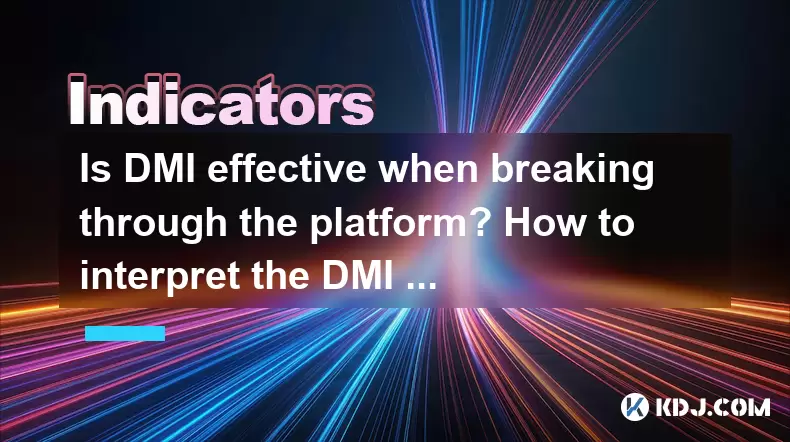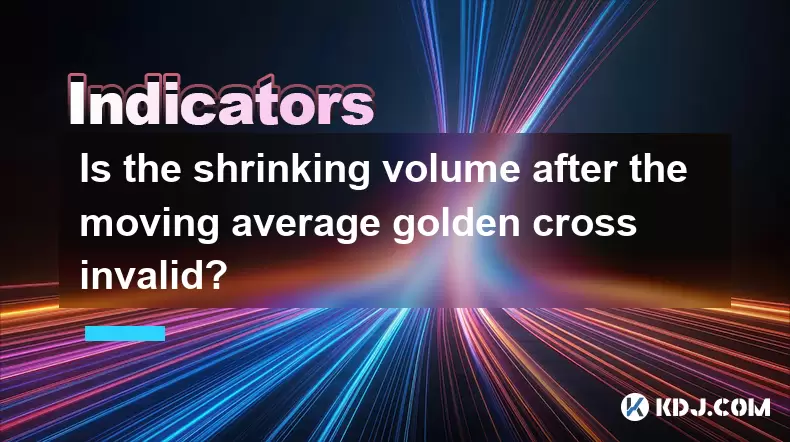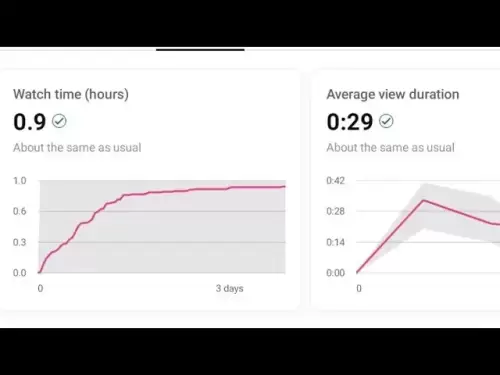-
 Bitcoin
Bitcoin $103,456.1111
0.49% -
 Ethereum
Ethereum $2,414.9631
0.02% -
 Tether USDt
Tether USDt $1.0006
0.05% -
 XRP
XRP $2.1083
0.24% -
 BNB
BNB $634.8760
-0.76% -
 Solana
Solana $139.8437
1.94% -
 USDC
USDC $0.9998
-0.01% -
 TRON
TRON $0.2737
0.97% -
 Dogecoin
Dogecoin $0.1602
0.20% -
 Cardano
Cardano $0.5737
1.08% -
 Hyperliquid
Hyperliquid $32.9779
-2.54% -
 Bitcoin Cash
Bitcoin Cash $474.8886
-1.80% -
 Sui
Sui $2.6272
-1.99% -
 Chainlink
Chainlink $12.4878
0.14% -
 UNUS SED LEO
UNUS SED LEO $8.9234
0.35% -
 Stellar
Stellar $0.2411
-0.18% -
 Avalanche
Avalanche $17.0274
-0.70% -
 Toncoin
Toncoin $2.8936
-1.11% -
 Shiba Inu
Shiba Inu $0.0...01112
-0.58% -
 Litecoin
Litecoin $82.6982
1.33% -
 Hedera
Hedera $0.1423
-0.05% -
 Monero
Monero $314.8455
3.26% -
 Ethena USDe
Ethena USDe $1.0006
0.01% -
 Polkadot
Polkadot $3.4043
1.14% -
 Dai
Dai $0.9999
0.01% -
 Bitget Token
Bitget Token $4.2848
-0.13% -
 Uniswap
Uniswap $6.8748
-5.45% -
 Pepe
Pepe $0.0...09661
0.52% -
 Pi
Pi $0.5359
1.19% -
 Aave
Aave $242.9168
-1.03%
Is DMI effective when breaking through the platform? How to interpret the DMI signal of a sideways breakthrough?
DMI helps traders identify potential breakouts in crypto markets by analyzing +DI, -DI, and ADX, crucial for informed trading decisions.
May 27, 2025 at 07:42 pm

The Directional Movement Index (DMI) is a popular technical indicator used by traders in the cryptocurrency market to assess the strength of a price movement and to identify potential breakouts. When it comes to breaking through platforms or sideways trends, the effectiveness of DMI and its interpretation can be crucial for making informed trading decisions. In this article, we will delve into the specifics of how DMI functions in these scenarios and provide a comprehensive guide on interpreting its signals.
Understanding the DMI Indicator
The DMI is composed of three lines: the Positive Directional Indicator (+DI), the Negative Directional Indicator (-DI), and the Average Directional Index (ADX). The +DI measures the upward movement in price, while the -DI measures the downward movement. The ADX, on the other hand, quantifies the strength of the trend, regardless of its direction.
To calculate the DMI, traders follow these steps:
- Calculate the +DI and -DI using the highest high and lowest low of the current and previous periods.
- Compute the ADX by smoothing the difference between +DI and -DI over a specified period, usually 14 days.
The effectiveness of DMI in breaking through platforms largely depends on how well traders can interpret the signals it provides.
DMI and Platform Breakthroughs
When a cryptocurrency is trading within a platform or range, the DMI can be a valuable tool for anticipating potential breakouts. A platform breakthrough occurs when the price moves decisively above or below the established range, signaling a potential change in market sentiment.
For a bullish breakthrough, traders look for the following DMI signals:
- The +DI line crosses above the -DI line, indicating increasing bullish momentum.
- The ADX line rises above a threshold, typically 25, suggesting that the trend is gaining strength.
For a bearish breakthrough, the signals to watch are:
- The -DI line crosses above the +DI line, indicating increasing bearish momentum.
- The ADX line rises above 25, confirming the strength of the bearish trend.
By monitoring these signals, traders can better position themselves to capitalize on potential platform breakthroughs.
Interpreting DMI Signals in Sideways Breakthroughs
A sideways breakthrough refers to a situation where the price of a cryptocurrency breaks out of a horizontal trading range. The DMI can help traders identify these breakthroughs and make informed decisions.
To interpret DMI signals in a sideways breakthrough, consider the following:
- Crossover of +DI and -DI: A crossover of the +DI above the -DI suggests a potential upward breakthrough, while a crossover of the -DI above the +DI indicates a potential downward breakthrough.
- ADX Movement: An increasing ADX line above 25 confirms the strength of the breakthrough, whether it is upward or downward.
Additionally, traders should pay attention to the following nuances:
- Volume Confirmation: A significant increase in trading volume during the breakthrough can validate the DMI signals, suggesting a more reliable move.
- Price Action: The price should decisively move outside the established range to confirm the breakthrough.
Practical Example of DMI in Action
Let's consider a practical example to illustrate how the DMI can be used to identify a platform breakthrough in the cryptocurrency market.
Suppose a cryptocurrency, Bitcoin (BTC), has been trading within a platform between $30,000 and $32,000 for several weeks. A trader using the DMI observes the following:
- The +DI line crosses above the -DI line.
- The ADX line rises above 25 and continues to increase.
These signals suggest a potential bullish breakthrough. The trader decides to enter a long position once the price decisively breaks above $32,000, accompanied by a significant increase in trading volume.
Using DMI with Other Indicators
While the DMI is a powerful tool on its own, it can be even more effective when used in conjunction with other technical indicators. Combining DMI with indicators such as the Relative Strength Index (RSI) or Moving Averages can provide a more comprehensive view of market conditions.
Here are some ways to use DMI with other indicators:
- RSI and DMI: The RSI can help confirm overbought or oversold conditions, which can be useful in validating DMI signals. For instance, if the DMI indicates a bullish breakthrough and the RSI is below 70, it may suggest a more sustainable upward move.
- Moving Averages and DMI: A crossover of a short-term moving average above a long-term moving average can confirm a bullish DMI signal, while a bearish crossover can confirm a bearish DMI signal.
By integrating DMI with other indicators, traders can enhance their ability to identify and capitalize on platform breakthroughs.
Common Mistakes to Avoid
When using the DMI to identify platform breakthroughs, traders should be aware of common pitfalls that can lead to misinterpretation of signals.
Some common mistakes to avoid include:
- Ignoring the ADX: Focusing solely on the +DI and -DI crossovers without considering the ADX can lead to false signals. The ADX provides crucial information about the strength of the trend.
- Overlooking Volume: Failing to confirm DMI signals with trading volume can result in entering trades based on weak breakouts.
- Chasing Breakouts: Entering a trade too late after a breakthrough has already occurred can lead to buying at the top or selling at the bottom.
By being mindful of these common mistakes, traders can improve their use of the DMI and increase their chances of success in identifying platform breakthroughs.
Frequently Asked Questions
Q: Can the DMI be used effectively in all market conditions?
A: The DMI is most effective in trending markets, where it can accurately identify the strength and direction of the trend. In choppy or sideways markets, the DMI may produce more false signals, making it less reliable. Traders should combine the DMI with other indicators and market analysis to enhance its effectiveness in various market conditions.
Q: How often should the DMI be recalculated for optimal results?
A: The DMI is typically calculated using a 14-day period, which is considered optimal for most trading scenarios. However, traders can adjust the period based on their trading style and the specific cryptocurrency they are analyzing. Shorter periods can provide more responsive signals, while longer periods can offer more stable but delayed signals.
Q: Are there any specific cryptocurrencies where the DMI performs better?
A: The effectiveness of the DMI is not inherently tied to specific cryptocurrencies but rather to the market conditions and trends of the asset being analyzed. That said, cryptocurrencies with higher liquidity and more pronounced trends, such as Bitcoin and Ethereum, may provide clearer DMI signals compared to less liquid altcoins.
Q: Can the DMI be used for short-term trading strategies?
A: Yes, the DMI can be used for short-term trading strategies, particularly when combined with other indicators that provide more immediate signals. Traders can use shorter periods for the DMI calculations to capture more frequent signals, but they should be cautious of increased noise and false breakouts in short-term trading.
Disclaimer:info@kdj.com
The information provided is not trading advice. kdj.com does not assume any responsibility for any investments made based on the information provided in this article. Cryptocurrencies are highly volatile and it is highly recommended that you invest with caution after thorough research!
If you believe that the content used on this website infringes your copyright, please contact us immediately (info@kdj.com) and we will delete it promptly.
- Ruvi AI: The Audited Token Poised to Outshine Shiba Inu
- 2025-06-22 10:25:12
- Dypians, DeFi, and Sei Network: A Deep Dive into the Latest Trends
- 2025-06-22 10:25:12
- Hacken Security Breach Highlights Risks Across Ethereum and BSC
- 2025-06-22 08:25:12
- SHIB Price, Forecasts, Timelines: Will Shiba Inu Ever Reach the 'One-Cent Dream'?
- 2025-06-22 08:25:12
- Avalanche vs. Ruvi AI: Why Smart Money's on This Audited Token
- 2025-06-22 08:45:12
- Bitcoin Demand on Pause: What's Next for the Crypto King?
- 2025-06-22 08:45:12
Related knowledge

Does the second surge in the RSI overbought zone induce more?
Jun 22,2025 at 08:35am
Understanding the RSI Overbought ZoneThe Relative Strength Index (RSI) is a momentum oscillator commonly used in technical analysis to measure the speed and change of price movements. It ranges from 0 to 100, with values above 70 typically considered overbought and values below 30 considered oversold. When the RSI enters the overbought zone for the firs...

Does the sudden contraction of ATR indicate the end of the trend?
Jun 20,2025 at 11:14pm
Understanding ATR and Its Role in Technical AnalysisThe Average True Range (ATR) is a technical indicator used to measure market volatility. Developed by J. Welles Wilder, ATR calculates the average range of price movement over a specified period, typically 14 periods. It does not indicate direction—only volatility. Traders use ATR to gauge how much an ...

Is it invalid if the DMI crosses but the ADX does not expand?
Jun 21,2025 at 09:35am
Understanding the DMI and ADX RelationshipIn technical analysis, the Directional Movement Index (DMI) consists of two lines: +DI (Positive Directional Indicator) and -DI (Negative Directional Indicator). These indicators are used to determine the direction of a trend. When +DI crosses above -DI, it is often interpreted as a bullish signal, while the opp...

How to filter false signals when the SAR indicator frequently flips?
Jun 21,2025 at 08:43pm
Understanding the SAR Indicator and Its BehaviorThe SAR (Stop and Reverse) indicator is a popular technical analysis tool used in cryptocurrency trading to identify potential reversals in price movement. It appears as a series of dots placed either above or below the price chart, signaling bullish or bearish trends. When the dots are below the price, it...

Is the trend continuation when the Williams indicator is oversold but there is no rebound?
Jun 20,2025 at 11:42pm
Understanding the Williams %R IndicatorThe Williams %R indicator, also known as the Williams Percent Range, is a momentum oscillator used in technical analysis to identify overbought and oversold levels in price movements. It typically ranges from 0 to -100, where values above -20 are considered overbought and values below -80 are considered oversold. T...

Is the shrinking volume after the moving average golden cross invalid?
Jun 22,2025 at 10:42am
Understanding the Moving Average Golden Cross in CryptocurrencyIn the world of cryptocurrency trading, technical indicators play a crucial role in decision-making. One such indicator is the moving average golden cross, which occurs when a short-term moving average crosses above a long-term moving average, typically signaling a bullish trend. This event ...

Does the second surge in the RSI overbought zone induce more?
Jun 22,2025 at 08:35am
Understanding the RSI Overbought ZoneThe Relative Strength Index (RSI) is a momentum oscillator commonly used in technical analysis to measure the speed and change of price movements. It ranges from 0 to 100, with values above 70 typically considered overbought and values below 30 considered oversold. When the RSI enters the overbought zone for the firs...

Does the sudden contraction of ATR indicate the end of the trend?
Jun 20,2025 at 11:14pm
Understanding ATR and Its Role in Technical AnalysisThe Average True Range (ATR) is a technical indicator used to measure market volatility. Developed by J. Welles Wilder, ATR calculates the average range of price movement over a specified period, typically 14 periods. It does not indicate direction—only volatility. Traders use ATR to gauge how much an ...

Is it invalid if the DMI crosses but the ADX does not expand?
Jun 21,2025 at 09:35am
Understanding the DMI and ADX RelationshipIn technical analysis, the Directional Movement Index (DMI) consists of two lines: +DI (Positive Directional Indicator) and -DI (Negative Directional Indicator). These indicators are used to determine the direction of a trend. When +DI crosses above -DI, it is often interpreted as a bullish signal, while the opp...

How to filter false signals when the SAR indicator frequently flips?
Jun 21,2025 at 08:43pm
Understanding the SAR Indicator and Its BehaviorThe SAR (Stop and Reverse) indicator is a popular technical analysis tool used in cryptocurrency trading to identify potential reversals in price movement. It appears as a series of dots placed either above or below the price chart, signaling bullish or bearish trends. When the dots are below the price, it...

Is the trend continuation when the Williams indicator is oversold but there is no rebound?
Jun 20,2025 at 11:42pm
Understanding the Williams %R IndicatorThe Williams %R indicator, also known as the Williams Percent Range, is a momentum oscillator used in technical analysis to identify overbought and oversold levels in price movements. It typically ranges from 0 to -100, where values above -20 are considered overbought and values below -80 are considered oversold. T...

Is the shrinking volume after the moving average golden cross invalid?
Jun 22,2025 at 10:42am
Understanding the Moving Average Golden Cross in CryptocurrencyIn the world of cryptocurrency trading, technical indicators play a crucial role in decision-making. One such indicator is the moving average golden cross, which occurs when a short-term moving average crosses above a long-term moving average, typically signaling a bullish trend. This event ...
See all articles
























































































